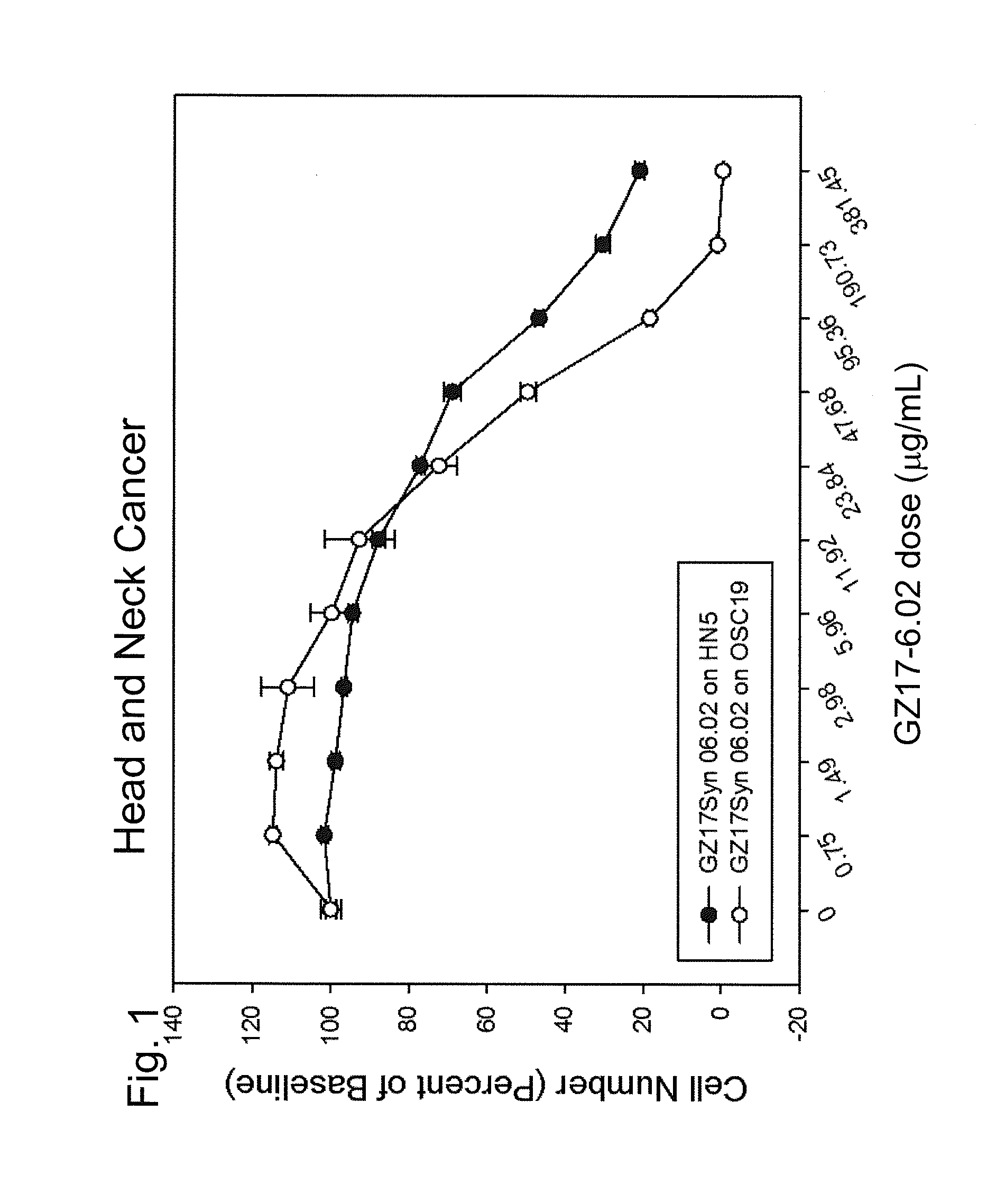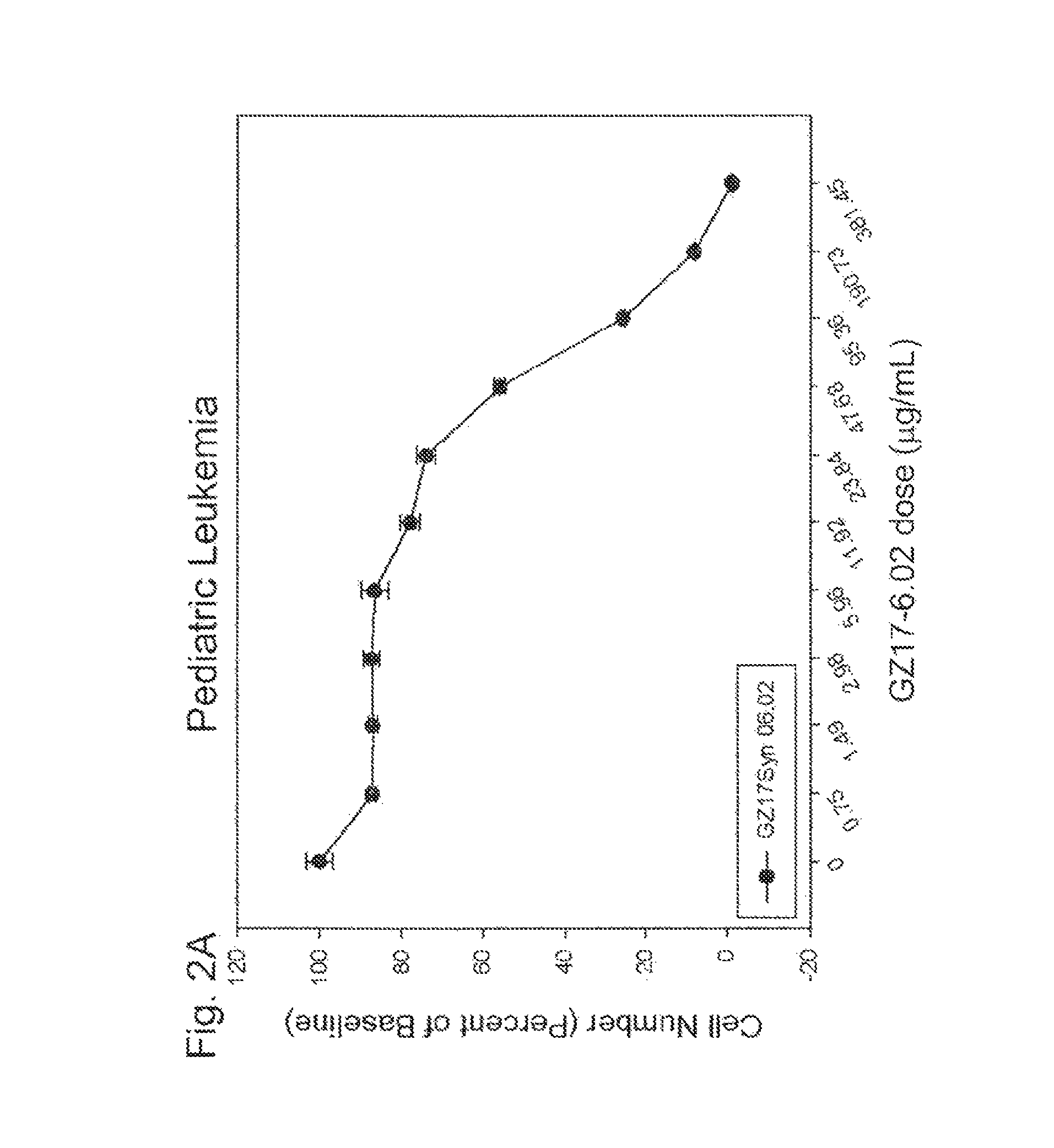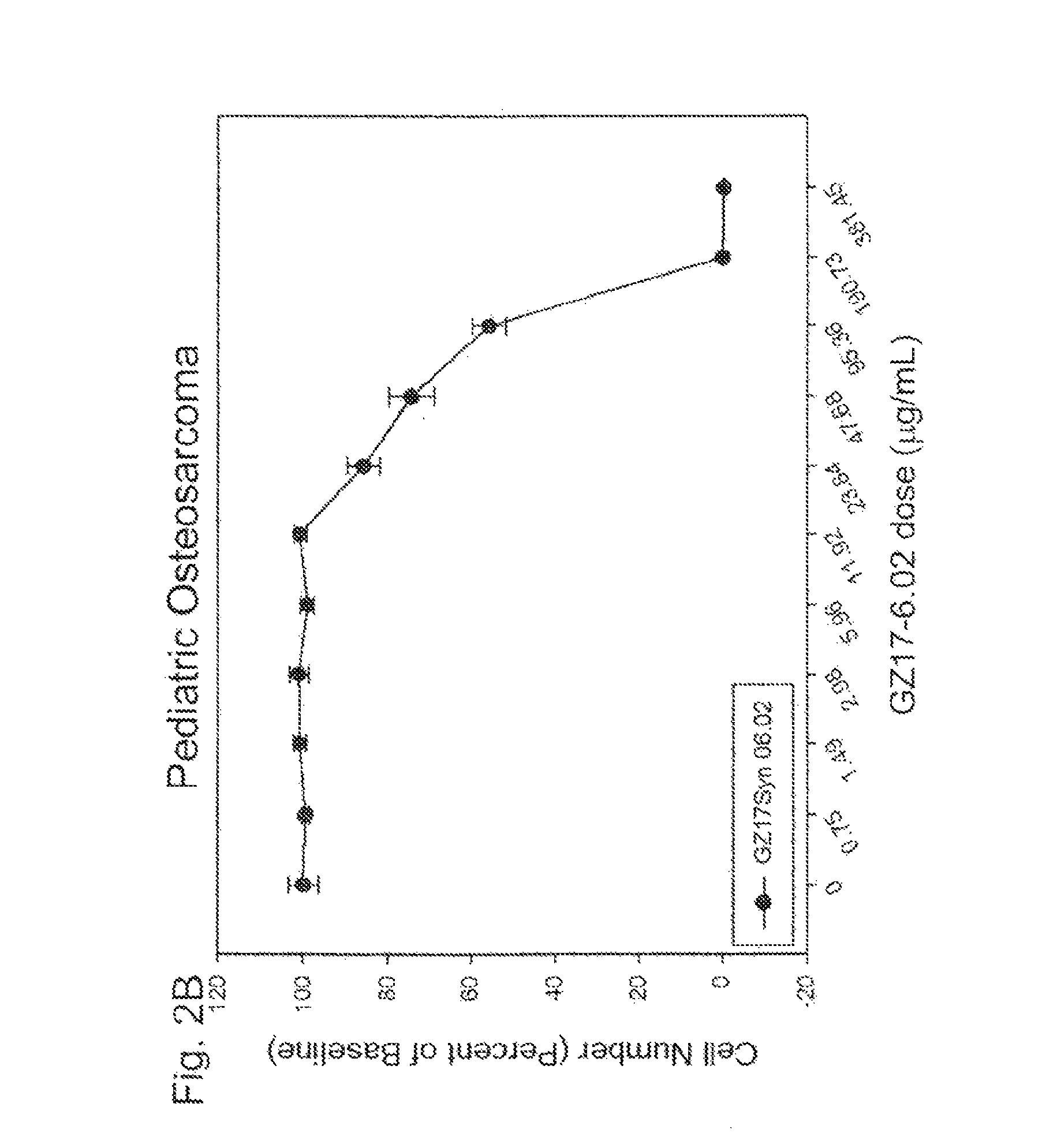Human therapeutic agents
a human therapeutic agent and chemotherapeutic technology, applied in the direction of aldehyde active ingredients, organic active ingredients, plant/algae/fungi/lichens ingredients, etc., can solve the problems of cancer death among women in low-income countries, cellular repair mechanisms to be less effective, and over-all risk accumulation, etc., to achieve the effect of boosting psa counts
- Summary
- Abstract
- Description
- Claims
- Application Information
AI Technical Summary
Benefits of technology
Problems solved by technology
Method used
Image
Examples
example 1
[0256]In this example, the preferred GZ17-6.02 product was tested with two different human head and neck cancers (HN5 and OSC19), in order to determine the extent of cell death induced by the product.
[0257]Methods
[0258]The respective cells were individually cultured in a growth medium prepared using RPMI-1640 medium containing 11.1 mM D-glucose with 10% fetal bovine serum, 10 mM HEPES, 2 mM L-glutamine, 1 mM sodium pyruvate, 0.05 mM 2-mercaptoethanol, and Antibiotic-Antimycotic. These cells were maintained in T75 tissue culture flasks in a humidified incubator at 37° C. and 5% CO2. The media were changed on a third day after cell plating, and the cells were passaged on day 5 by trypsinization.
[0259]Formation of Cancer Spheroids
[0260]Custom-made micromolds with 100 μm diameter wells were loaded with the cells (U.S. Pat. No. 8,735,154, incorporated by reference herein). The media were changed every day by partial replacement. Cell aggregates were allowed to form in the micromolds for ...
example 2
[0264]In this example, GZ17-6.02 was found to induce significant cancer cell death in human pediatric leukemia cells and pediatric osteosarcoma in a dose-dependent manner.
[0265]Jurkat leukemia cells were grown in suspension in media (RPMI supplemented with 10% FBS), maintained at approximately 500,000 cells / mL. The cells were plated in 96-well plates, and each well was exposed to a selected dose of GZ17-6.02 for 24 hours (a minimum of 4 replicates for each dosage). These cells were not treated to generate spheroids, but were directly plated onto the well plates. After a 24 hour exposure to the selected dosages of GZ17-6.02, PrestoBlue (Life Technologies, Inc) was added to each well and fluorescence readings were taken 4-6 hours later with an excitation wavelength of 485 nm and an emission wavelength of 560 nm, using a microplate reader (Enspire Multimode, PerkinElmer). Results were averaged following background subtraction and normalized to untreated cell controls.
[0266]Human osteos...
example 3
[0268]In this example, the effect of increasing doses of GZ17-6.02 in killing human lymphoma cells (mo205) and human lung cancer cells (H358) was tested.
[0269]The lymphomas treatment methods used were identical to those described in Example 2 relative to the pediatric leukemia cells, whereas the lung cancer treatment method was the same as described in Example 1.
[0270]FIGS. 3A and 3B set forth the results of these tests, and demonstrate the effectiveness of GZ17-6.02 in inducing lymphoma and lung cancer cell death.
PUM
| Property | Measurement | Unit |
|---|---|---|
| concentration | aaaaa | aaaaa |
| concentration | aaaaa | aaaaa |
| concentration | aaaaa | aaaaa |
Abstract
Description
Claims
Application Information
 Login to View More
Login to View More - R&D
- Intellectual Property
- Life Sciences
- Materials
- Tech Scout
- Unparalleled Data Quality
- Higher Quality Content
- 60% Fewer Hallucinations
Browse by: Latest US Patents, China's latest patents, Technical Efficacy Thesaurus, Application Domain, Technology Topic, Popular Technical Reports.
© 2025 PatSnap. All rights reserved.Legal|Privacy policy|Modern Slavery Act Transparency Statement|Sitemap|About US| Contact US: help@patsnap.com



